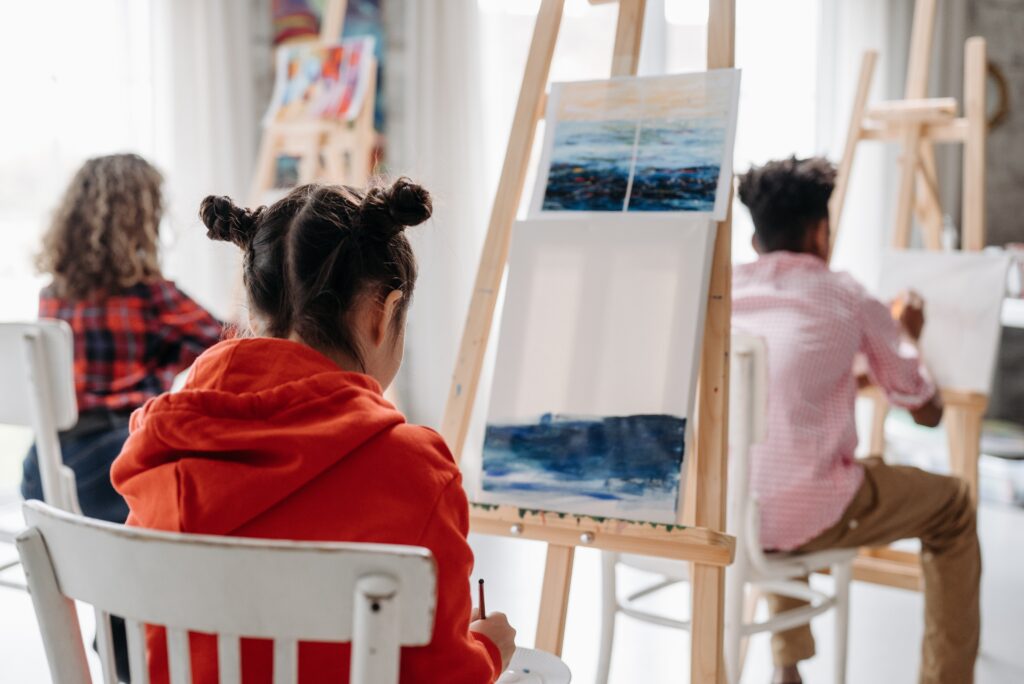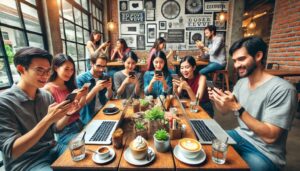
Brian Solis of Salesforce discusses why people are looking for a genuine connection with companies and organizations now more than ever
Brian Solis, global innovation evangelist at Salesforce, doesn’t mince words when it comes to how the coronavirus will change the way brands and organizations present themselves to the public. “If this pandemic has shown us anything, it’s that it’s time to add several new pillars to the brand that allow it to become much more human,” Solis says.
While his role at Salesforce — focusing on digital anthropology, digital transformation, innovation, and customer experience — is relatively new, Solis has spent the bulk of his career studying and predicting the effects of emerging technologies on business and society. He’s also a sharp observer of the intersection between marketing and consumer behavior. His most recent book, Lifescale, explores how to successfully navigate life in a world of relentless digital distractions.
Having their messages resonate with consumers — rather than being pegged a distraction — is one of the biggest challenges facing consumer brands these days. Their future may depend on it. Solis talked with ANA magazine about the digital transformation companies are now confronting, how the pandemic will fundamentally change marketing, and what the new normal will look like.
Q. Has the way that consumers expect to interact with brands changed as a result of the pandemic?
People have wanted a genuine and authentic connection with the brand. This is why for the last 20 years I’ve been working with organizations to ask them, “What does it mean to be a brand that’s meaningful in the digital era?”
I don’t know that legacy brands have realized that, to use Marshall McLuhan’s famous quote, “the medium is the message.” You have to reimagine the brand for a digital world, because it shows up differently. I believe that if this pandemic has shown us anything, it’s that it’s time to add several new pillars to the brand that allow it to become much more human.
I’ve often talked about this as experience design: What is the experience your brand creates? What does that experience look and feel like? Complement your brand style guide with an experience style guide.
Q. Is there something brands should be doing now that will help them come out ahead in terms of digital transformation?
When social media was first born, it was an opportunity. We as businesses and organizations were given a platform through which we could humanize — humanize our messaging, humanize our brands, humanize our employees — and build a greater community with customers and stakeholders around the world that was less hierarchical and more dynamic. Instead, social media led to the creation of marketing roles that were more about getting followers and showing this staged persona of the brand.
The opportunity was to show a side of the brand that could be a human being. Very few companies understand that, and very few companies understand the value of those roles within the organization. Here we are, 14 years later, and we’re still not really sure of the value of person-to-person marketing. We still email people in much the same way. We have access to artificial intelligence and machine learning platforms now that aren’t scaling humanity, they’re scaling the previous generation of broadcast-oriented marketing. There’s still much to learn.
One of the brands that I think sets a great example today is Steak-umm. That is probably one of the most authentic brands out there right now. It’s slices of steak, but it stands for something.
Q. Should marketers continue to put stock in data they collected from before the pandemic, or is this environment so different that marketers have to reevaluate what they thought they knew about their audiences’ behaviors?
Over the years, we had already learned that e-commerce was on the rise, but there was a sudden, overnight shift when everybody was placed in shelter‑in‑place. This is important because it insinuates that the consumer had a shock to the system and had no choice but to shop mobile first and desktop second. As a result, consumers started creating new patterns and behaviors.
If you think about the psychology of this, it takes 66 days on average for a person to adopt a new behavior that becomes automatic. You could infer that because we’ve been in shelter-in-place for longer than that in some places, over the next 36 months, you’re going to see this [e-commerce] behavior become much more concrete.
I gave this new generation the name “generation N” because it’s not organized by age, like millennials. It’s organized by a pandemic that has changed the world’s behaviors. Any data that you have from before March 1 should be disregarded. The behavior post shelter-in-place is what we want to start studying because it shows the emergence of a new customer, a digital- and mobile-first customer.
This goes back to the thread of humanity in the discussion: the customer is not done evolving. It’s not just about how they use devices; it’s about how this pandemic has changed who they are as a person. Chances are, consumers are going to be much more mindful of their money; they’re going to be much more mindful of what matters to them.
This is why we’ve seen incredible creativity on TikTok, YouTube, and Instagram, because people are being much more thoughtful about what they do, what they say, and what they express, because they have the time to do it. I think that’s going to reshape what people stand for and what status means to them. I think those things will reset brands and what brands create, sell, and market.
Q. How does generation N blend in with traditional generational marketing, or does that not matter anymore?
It depends on the organization. What’s really important right now for marketing is to partner with data science in some way to remove bias and to allow the data to reveal who the customer is right now, and who the customer is becoming. You also have to show how targeting the customer psychographically, not demographically, is going to yield a return now or over time that transforms marketing from a cost-center to an investment.
Coming into the pandemic we did talk about centennials, millennials, boomers, gen X, but that was just basic marketing. Anyone can stereotype a generation, but what’s your message? Who are you really trying to connect to? What’s that human being stand for, and what’s their aspiration when they attach their personal brand to your brand?
When you identify those things, you can connect with a 16-year-old, and a 26-year-old, and a 36-year-old. That’s why this idea of generation N forces businesses to use data to look at the common sets of behavior. It becomes bigger than generational marketing, and it becomes more meaningful.
Q. From a marketing standpoint, what do you hope will be part of the “next normal,” that evolves in the months and years ahead?
New and unusual is going to define the next 36 months, for better or for worse. Because it’s new and unusual, there is no playbook for how we’re supposed to survive and thrive. I think in the back of [business leaders’] minds, there’s this assumption that things will go back to the way they were.
For example, I have this delusion that it’s summer and I go to my favorite restaurant, sit outside, and have a glass of wine. That’s a great image to hold on to, but in reality until there is some type of treatment — not even a vaccine but some type of treatment — chances are that that restaurant is going to be less densely packed, service is going to look a little strange with masks and maybe gloves, and food and beverage handling will be unique. So I don’t even allow myself to entertain that visual experience because I haven’t experienced it yet. But it’s going to be much different than what I know.
Q. What are the major differences between the digital-first marketing strategies that brands are having to adopt today and the traditional/digital-hybrid strategies that people were using just a few months ago?
I’d like to say that it’s driven by the customers, because brands studied their behavior and their preferences and genuinely developed an engagement strategy that was going to better match what today’s customer expects. But the honest answer is that it took a jolt to the system for marketers to be awakened to the reality that the customer is digital-first.
Digital isn’t just a mechanism for engagement, it isn’t just a channel for your message. There’s a human being on the other side of the screen, and this pandemic has shown that human beings don’t respond well to marketing messages. Human beings want genuine engagement.
What we saw in the first weeks of the pandemic was marketing using digital to share [the company’s] coronavirus empathy, or to communicate in “these uncertain times.” Ultimately, I think that exercise showed that digital marketers need to be much more human and empathetic in their engagement, and use digital as a means to be more personal at a time when people actually are looking for that type of sanity, that type of empathy, that type of engagement, and that type of meaning while the whole world is in a state of chaos.
Q. Is a digital-first strategy really just thinking about the actual person on the other end of the digital connection?
Exactly. When it comes to throwing marketing messaging out into the void, the first wave was pre-COVID. The second wave was the “these uncertain times” emails and marketing messages. Taking that a step further, marketers are realizing, “Wow, I guess we really have to think about what we’re going to send next, because these are different times and people are looking for engagement that is meaningful.”

Brian Solis | Author, Keynote Speaker, Futurist
Brian Solis is world-renowned digital analyst, anthropologist and futurist. He is also a sought-after keynote speaker and an 8x best-selling author. In his new book, Lifescale: How to live a more creative, productive and happy life, Brian tackles the struggles of living in a world rife with constant digital distractions. His previous books, X: The Experience When Business Meets Design and What’s the Future of Business explore the future of customer and user experience design and modernizing customer engagement in the four moments of truth.
Invite him to speak at your next event or bring him in to your organization to inspire colleagues, executives and boards of directors.





Leave a Reply